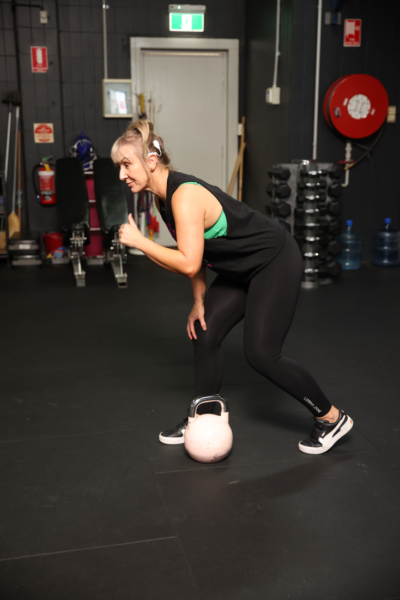Whether you love working up a sweat during a gym class, hitting the golf course, jumping in the pool or simply taking a quiet walk outside, there’s nothing stopping you from being active with your cochlear implant.
Being active is important for your health, your mind and it’s also key to staying positive.
Not sure how to get started or looking for tips for trying out something new? Here are some common FAQs to help.
Can I get my sound processor wet?
Your Cochlear™ Nucleus® NexaTM Sound Processor is splash-proof and dust-proof with the highest available water-resistance rating in a sound processor (IP68). It’s designed to withstand a sweaty workout at the gym, getting caught in the rain, or getting splashed in a pool without damage.
For activities like swimming in salt water, rushing water, or for extended periods, we recommend Cochlear Aqua+ accessories1 to provide added protection. With it you can swim up to three meters deep for up to two hours.
“When you’re out in the wilderness, if it starts to rain, you can be confident your processor is protected from getting wet, so you’ll be able to stay out in the wilderness and not have to worry about it—and not have to take it off and not be able to hear anything,” says Jack, who is a cochlear implant recipient and enjoys fishing.
How can I hear clearly at gym classes or on a sports field?
Gym classes and yoga classes can be challenging when the instructor’s voice is competing with music or background noise. Or when playing team sports and you need to hear what the coach is saying from a distance. To help, you can use the Wireless Mini Microphone 2+. When the coach or gym instructor (or whoever you need to hear), clips it on their clothing, the sound of their voice streams directly to your sound processor.
How do I reduce the sound of wind?
If wind noise is a challenge for you, here are three suggestions:
- You can ask your clinician to enable Wind Noise Reduction (WNR) in the settings of the Nucleus Smart App2 and use the SCAN3
- Some people with cochlear implants say that growing their hair longer over their ears has helped reduce wind noise.
- Wear a headband, hood, or beanie to cover minimize the wind over your sound processor microphones.
How do I take care of my sound processor after activities?
Exposure to sweat, water, dust and dirt can impact the performance and lifespan of your device. It’s important to take care of it by wiping it with a dry, clean cloth and storing it overnight using your dehumidifier. If you use the Nucleus Kanso® 3 Nexa Sound Processor, the dehumidifier is included in your Home Charger.
Also, make sure you change your microphone covers if needed to avoid any disruption to your sound quality. These should be changed every three months, or sooner if they become dirty.
How do I stop my sound processor from falling off?
If you live an active life, there’s no need to worry about losing your device. There are a wide range of options to help keep your sound processor securely attached and in place to help prevent you from losing it, especially during physical activities and sports.
- Snugfit helps tighten the sound processor on the ear, especially for active adults and children. The Snugfit comes in three sizes for a secure fit (small, medium and large).
- Hugfit™ is a soft, flexible band to help secure the sound processor that’s available in five sizes.
- Safety Cord helps ensure your sound processor doesn’t get lost if it comes off your ear by securing your sound processor to clothing.
- Safety Lines and Safety Line Hair Clips clip onto your hair and help reduce the risk of losing your sound processors. These are great options to provide the extra security you need when on the go.
- Earhook comfortably secures the sound processor to your ear. We offer a variety of earhooks for your specific needs.
- Headband is an optional accessory that holds the sound processor in place.
- Earmold Adaptor allows you to attach a custom earmold to your sound processors as an option for those who are comfortable using an earmold, such as former hearing aid users. (Note, the custom earmold is not supplied by Cochlear.)
- Kanso® Halo is designed with two attachment points to help keep the Kanso 3 Sound Processor more securely on your head.
You can find all these accessories on the online Cochlear Store.
Can I wear a helmet with my sound processor?
For many sports, it’s important to stay safe by wearing a helmet, but it’s just as important to be able to hear—whether it’s listening to your teammates or while biking on busy roads.
The good news is, it’s possible to wear a helmet with your sound processor with a little preparation. It might take a few trials, but you are likely to find a helmet that works. Here are some tips:
- Cochlear advises that you wear a helmet designed for the specific activity you’re pursuing. Try different sizes and brands until you find a helmet which is comfortable and doesn’t knock off the sound processor or coil.
- When it comes to hard-shell helmets – the kind people wear for cycling, remember not to make any physical alteration to the helmet as it could reduce the protection it provides.
- It helps to find a way to secure the coil and sound processor so that they are not dislodged when putting the helmet on or taking it off. One option is to wear a thin sweat band around your head that covers the coil and the top of the sound processor or use the Cochlear Headband, available on the online Cochlear Store
- You can also try using one of the Safety Cords listed above, also available from the online Cochlear Store.
Why exercise is even more important now?
As well as keeping you fit and happy, getting active can help you manage any extra stress you’re carrying while you get used to life with your cochlear implant. Not to mention that getting back into activities you enjoyed before you got your implant (as well as new experiences) are an important milestone as you make the most of your new hearing.
Roger, who uses bilateral cochlear implants says it best. “Whatever your sport, find a way to use your devices—hearing wins hands down.” – Roger
For retention products mentioned above to assist with keeping you active with your cochlear implant, visit the online Cochlear Store.
- The Cochlear Nucleus 8 Nexa and Nucleus 8 Sound Processors with the rechargeable battery module and Kanso 3 Nexa and Kanso 3 Sound Processors meet the IP68 rating of the International Standard IEC60529 of freshwater waterproof. These processor configurations were tested by continuous submersion in freshwater for 60 minutes at a depth of 1 meter and functioned as intended. Cochlear offers the Aqua+ accessory for additional protection during extended water use, in salty or rushing water environments. For additional information, please refer to the appropriate user guide.1,2 1.Cochlear Limited D1980144 CP1110 IEC60529 IP68 Certificate & Test Report 2. Cochlear Limited. D1671736. CP1150 IEC60529 Ingress Protection Test Report IP68.
- The Cochlear Nucleus Smart App is available on App Store and Google Play. For compatibility information visit www.cochlear.com/compatibility.
- SNR-NR, WNR and SCAN are approved for use with any recipient ages 6 years and older who is able to 1) complete objective speech perception testing in quiet and in noise in order to determine and document performance 2) report a preference for different program settings.
program to automatically reduce wind noise when its detected.

